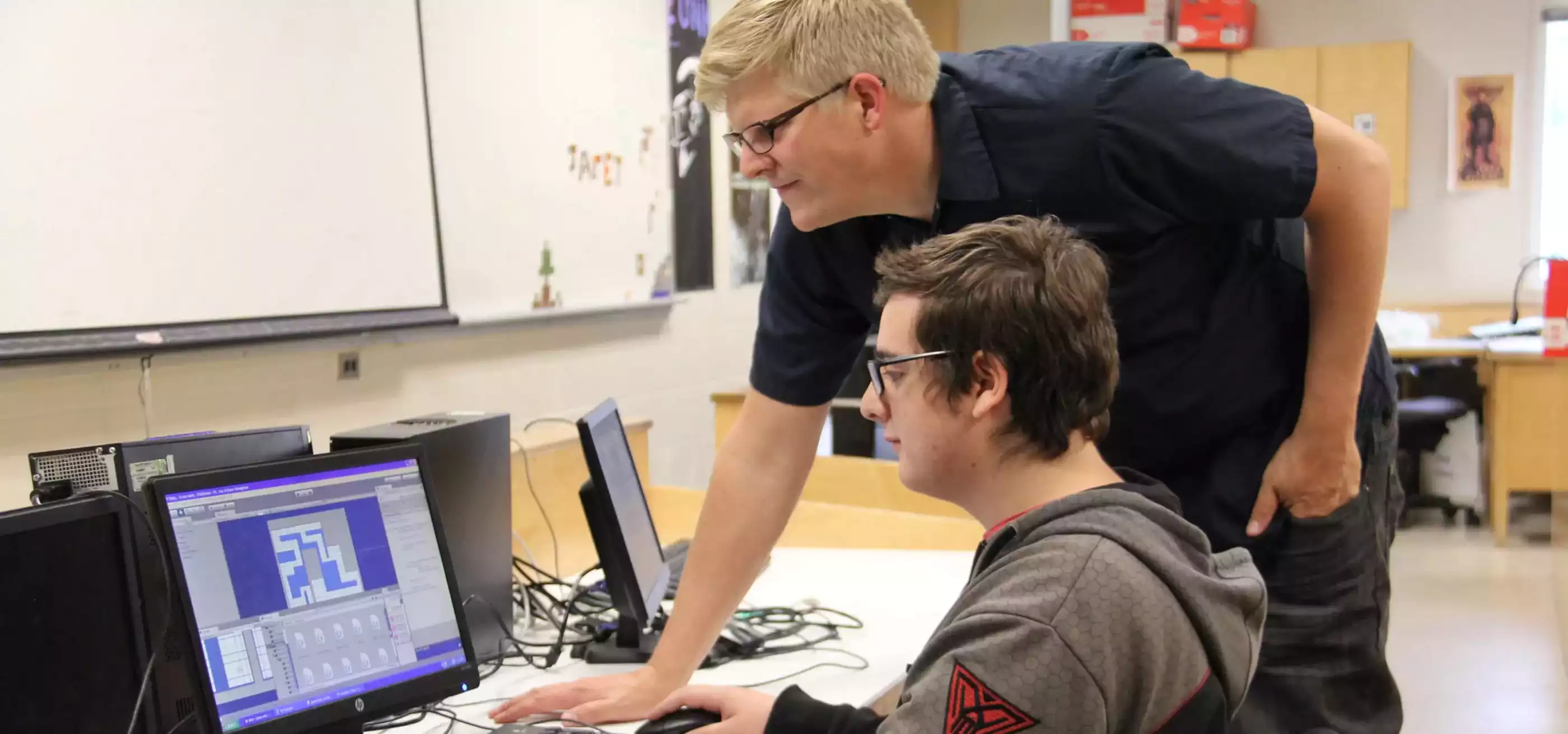For more than 20 years, DigiPen’s ProjectFUN youth programshave encouraged kids and teens in grades K-12 to learn about career opportunities in computer science, video game development, art and animation, and engineering. While the majority of these programs take place at DigiPen Institute of Technology’s main campus in Redmond, Washington, ProjectFUN lessons have since expanded to high schools across the United States and around the world.
School District 73 in Kamloops, British Columbia, is just one location where the ProjectFUN curriculum has taken root. Here, secondary school students learn ProjectFUN in the form of a program called the Digital Technology Academy (sometimes referred to by students as simply “the DigiPen Academy”).
“We run a tech academy that kids from every one of our high schools in the district can apply to join,” says Justin deVries, a science teacher at Sa-Hali Secondary School who has organized and taught the academy program for the last two years.
Students who attend the academy go to Sa-Hali Secondary School from 8:30 a.m. to 3 p.m. each weekday for an entire semester. They forgo classes at the secondary school they would normally attend in favor of an intensely focused computer science education experience. The course structure is nearly identical to that of DigiPen’s WaNIC Academy in the United States; students learn about computer science and software development by designing and creating video games over six distinct course modules.
“They’re not just learning new skills for the sake of learning new skills,” deVries says. “If [a student] says, ‘I want to learn to be a game maker,’ I say, ‘Great! Let’s prove it.’ So the content is one thing, but also the skill set students grow from being in groups is amazing, because they learn through the trials and tribulations of working together, depending on each other, and communicating the vision of the game and how it should fit together.
If [a student] says, ‘I want to learn to be a game maker,’ I say, ‘Great! Let’s prove it.’”
“They don’t have to ask me any questions like, ‘Why are we learning this?’” says deVries. “There’s a very obvious point to all of it.”
One of the benefits of enrolling in the Digital Technology Academy, deVries says, is that students can earn college credit at the same time as secondary school credit. DeVries says the school district has partnered with Thompson Rivers University to ensure the course curriculum satisfies college requirements. “[College officials] have looked at the content from DigiPen’s ProjectFUN program and have said, ‘Yeah, this content aligns with four of our first-year university computer science courses,’” says deVries. “So if a kid takes the [Digital Technology] Academy here at Sa-Hali, they get dual credit for secondary school and university.”
In addition to studying rigorous course curriculum, participants get to visit DigiPen’s Redmond campus as part of the program. DeVries hopes that students leave the program inspired and excited to pursue topics in computer science and technology.
“They identify and use their skills in a way that is effective and useful and therefore it gives them a sense of fulfillment,” deVries says. “They’re not learning so they can graduate — they’re learning so they can make games, and that makes all the difference.”
They’re not learning so they can graduate — they’re learning so they can make games, and that makes all the difference.”
This fall will mark the program’s third year, and deVries expects no shortage of participants from the school district, as well as beyond. “We’re a small town with about 100,000 or fewer living in Kamloops, so we get 18 to 20 kids from schools all over the city,” deVries says. “This year I’m really excited because a student from France got wind of what this school district does, and they’re coming to Kamloops as an international student to take part in this opportunity.”
Raymond Yan, DigiPen’s Senior Vice-President for K-12 Programs, says his team is hoping to expand ProjectFUN’s Canadian effort into the Kelowna School District in British Columbia by the end of the year. Eventually, he says, he would like to collaborate with more schools in the greater Vancouver area.
“DigiPen’s partnership with School District 73 is something that we value greatly,” says Yan, “It is satisfying to see the positive results coming out of this growing program. DigiPen has a history in British Columbia, and we’re excited to engage with students in more Canadian school districts as we continue to expand ProjectFUN’s connections in the region.”
DeVries says the program has been “wildly successful” among Kamloops students. “I would say the biggest thing students get out of [this program] is a sense of identity,” he says. “I use the fact that they like games to … give them vocabulary and knowledge and skills to become a game maker and something they feel they ‘are’ instead of just the things they ‘know.’
“I know it’s weird to say that I’m teaching them how to make video games and out of that they’re getting a sense of identity and belonging, but it’s really true.”
Click here to learn more about ProjectFUN’s off-site programs.
